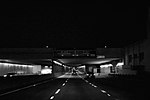Automobile Driving Museum

The Automobile Driving Museum is an automotive museum located at 610 Lairport Street, El Segundo, California, USA. The museum is nonprofit 501(c)(3) organization, founded in 2002 (2002) by car collectors Stanley Zimmerman and architect Earl Rubenstein. Its mission is to "collect, preserve, exhibit and ride in historic vehicles." It contains about 130 classic, antique, and vintage automobiles created between 1886 and 2000, of which roughly half are on display at any time. Visitors are permitted to touch and sit in most cars, and on Sunday Car Rides, experience driving around in classic vehicles. Its collection includes: 1932 Plymouth Brewster Town Car, owned by Eleanor Roosevelt 1936 Packard touring phaeton, given by Franklin Delano Roosevelt to Joseph Stalin 1955 Packard Caribbean Convertible, given by Howard Hughes to his wife, Jean Peters
Excerpt from the Wikipedia article Automobile Driving Museum (License: CC BY-SA 3.0, Authors, Images).Automobile Driving Museum
Lairport Street,
Geographical coordinates (GPS) Address Nearby Places Show on map
Geographical coordinates (GPS)
| Latitude | Longitude |
|---|---|
| N 33.924643 ° | E -118.392109 ° |
Address
Automobile Driving Museum
Lairport Street 610
90245
California, United States
Open on Google Maps









